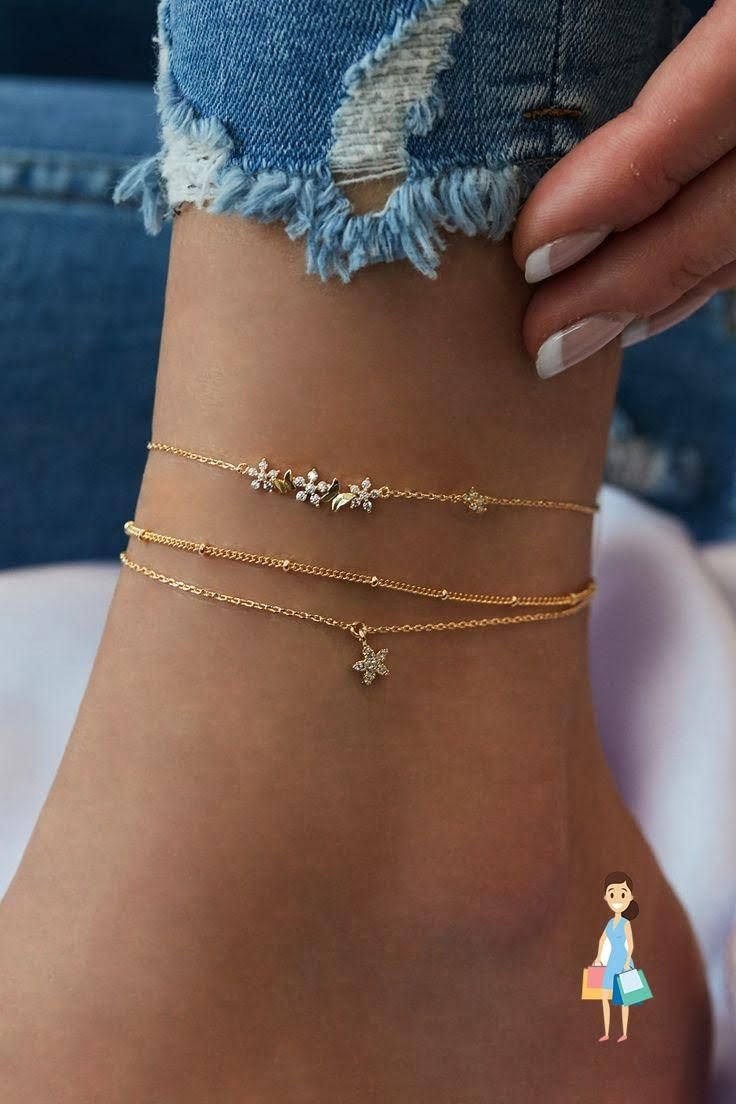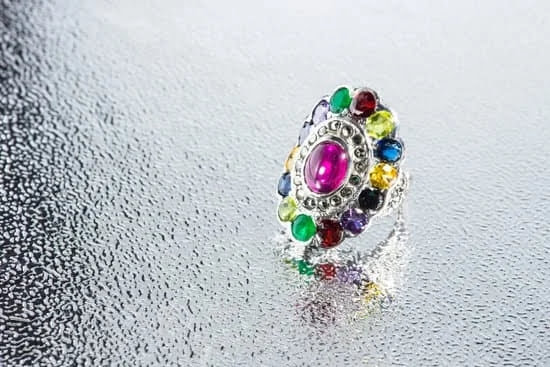History of bakelite jewelry dates back to the early 20th century, when this innovative material revolutionized the world of accessories. Bakelite, a type of plastic, became a popular choice for jewelry making due to its versatility and durability. In this section, we will delve into the significance of Bakelite in the history of jewelry making, from its invention to its current resurgence in the vintage and collector’s market.
The introduction of Bakelite marked a significant milestone in the history of jewelry making. Developed by Belgian chemist Leo Baekeland in 1907, Bakelite was the first synthetic plastic and quickly gained popularity for its moldability and ability to retain vibrant colors. This newfound material not only revolutionized the jewelry industry but also had a considerable impact on fashion trends during its peak.
As we explore the history and impact of Bakelite jewelry, it is important to understand its unique characteristics. From its wide range of colors to its resistance to heat and chemicals, Bakelite quickly became prized for its distinct qualities. Throughout this article, we will uncover how these features contributed to the rise of Bakelite jewelry as a fashionable and sought-after accessory.
The enduring legacy of Bakelite jewelry continues to captivate collectors and enthusiasts today. By understanding its history and evolution, we can gain insight into how this once-popular material remains relevant in modern designs. Join us on this journey through the past, present, and future of Bakelite jewelry as we uncover the remarkable story behind this iconic material.
The Invention of Bakelite
Bakelite, often hailed as the world’s first synthetic plastic, revolutionized the jewelry industry with its unique characteristics and versatile properties. The history of Bakelite jewelry can be traced back to its invention by Leo Baekeland in 1907. Baekeland, a Belgian chemist based in the United States, discovered Bakelite while conducting experiments to create a synthetic resin that could be used as an electrical insulator. This momentous discovery marked the beginning of a new era in jewelry making.
Leo Baekeland’s invention of Bakelite was groundbreaking not only because it led to the creation of a durable and affordable material but also because it paved the way for mass production and innovative design possibilities in the jewelry industry. Unlike traditional materials such as metal or gemstones, Bakelite offered jewelers and designers a malleable substance that could be molded into various shapes and forms.
Its initial use as an electrical insulator quickly expanded to include other applications, including vibrant and colorful jewelry pieces that captured the spirit of the Art Deco era.
As demand for Bakelite jewelry soared, manufacturers began producing an array of designs, from bold bangles to intricate brooches, showcasing the material’s ability to mimic expensive materials like ivory or tortoiseshell. This newfound popularity cemented Bakelite’s place in fashion history and prompted even more experimentation with color combinations and carving techniques.
The development of Bakelite by Leo Baekeland indeed marked a significant turning point in the evolution of jewelry making, forever changing the landscape of adornment through its innovative properties.
Rise to Popularity
During the early 20th century, Bakelite jewelry experienced a significant rise in popularity, becoming a trend that left a lasting impact on fashion. The unique characteristics of Bakelite, such as its vibrant colors and durability, appealed to both designers and consumers, leading to a surge in production and demand for this novel material. As the Art Deco movement gained momentum, Bakelite jewelry became emblematic of the era’s modern and avant-garde aesthetic, further propelling its popularity.
The appeal of Bakelite jewelry extended beyond its visual allure; its affordability compared to traditional precious metals and gemstones made it accessible to a wider audience. This accessibility allowed individuals from various socioeconomic backgrounds to incorporate stylish and fashionable accessories into their wardrobes, contributing to the democratization of fashion during that time.
Additionally, the innovative designs and striking color combinations of Bakelite jewelry appealed to the dynamic and bold spirit of the Jazz Age, solidifying its status as a sought-after fashion accessory.
As Hollywood starlets and socialites began embracing Bakelite jewelry as part of their signature looks, its influence spread rapidly throughout mainstream fashion. Celebrities and influential figures donned Bakelite bangles, brooches, and necklaces, setting off a trend that captivated mass audiences.
The widespread appeal of Bakelite jewelry signified a shift in fashion preferences – from traditional heirloom pieces to contemporary statement accessories that reflected the modern sensibilities of the time. As a result, Bakelite jewelry became integral not only in defining personal style but also in shaping the overarching trends within the fashion industry.
Characteristics of Bakelite Jewelry
Bakelite jewelry is known for its distinct characteristics and features that set it apart from other types of vintage jewelry. Understanding the unique qualities of Bakelite can help collectors and enthusiasts appreciate its historical significance and value in the world of jewelry making.
One of the most notable features of Bakelite jewelry is its vibrant color range. Unlike other materials, Bakelite has the ability to retain its bold and bright hues over time, making it a sought-after choice for colorful statement pieces. From rich reds and deep greens to striking yellows and bold blues, Bakelite jewelry offers a diverse spectrum of colors that adds a playful and dynamic element to any outfit.
Aside from its vivid color range, Bakelite jewelry is also prized for its durability. The material is known for being robust and resistant to scratches, making it ideal for everyday wear. This quality has contributed to the longevity of many vintage Bakelite pieces, as they have stood the test of time and remained in excellent condition despite their age.
In addition to its color vibrancy and durability, another unique quality of Bakelite jewelry is its versatility in design. Whether it’s chunky bangles, geometric brooches, or intricate carved earrings, Bakelite lends itself to a wide range of artistic expressions. Designers were able to experiment with shapes, textures, and patterns, creating a diverse array of styles that catered to various fashion trends throughout history.
Notable Designers and Collections
During the height of its popularity, Bakelite jewelry captured the imagination of both designers and consumers alike, leading to the creation of iconic collections that are still revered today. The following are some of the most influential designers and their noteworthy collections that contributed to the widespread appeal of Bakelite jewelry:
- Elsa Schiaparelli: An avant-garde fashion designer known for her bold and innovative creations, Schiaparelli incorporated Bakelite into her whimsical and surreal jewelry designs. Her collaboration with renowned surrealist artist Salvador Dali resulted in striking and unconventional pieces that defied traditional notions of beauty.
- Coco Chanel: The legendary fashion icon embraced the use of Bakelite in her influential costume jewelry collections, blending simplicity with elegance. Chanel’s timeless designs elevated Bakelite jewelry to a high fashion status, making it accessible to a broader audience.
- The “Fakelite” Collection by Lea Stein: French designer Lea Stein gained acclaim for her imaginative and whimsical “Fakelite” collection, which showcased intricate patterns and vibrant colors. Known for her distinctive brooches and pins, Stein’s designs continue to captivate collectors and enthusiasts with their playful charm.
These pioneering designers not only propelled Bakelite jewelry into the spotlight but also left an indelible mark on the industry with their innovative approaches. Their creative vision and mastery of materials solidified Bakelite as a lasting symbol of artistic expression and craftsmanship.
As these notable designers continue to inspire contemporary artisans, their contributions to the history of Bakelite jewelry serve as a testament to its enduring allure. Many collectors seek out these iconic pieces as valuable additions to their vintage jewelry collections, ensuring that the legacy of these influential designers lives on in the modern appreciation for Bakelite jewelry.
Decline and Resurgence
During the mid-20th century, as new synthetic materials and manufacturing methods emerged, the popularity of Bakelite jewelry began to wane. The shift towards modern plastics and metals led to a decline in the production and demand for Bakelite pieces. Additionally, changing fashion trends played a role in the decreased interest in Bakelite jewelry, with consumers favoring sleeker and more contemporary designs.
The decline of Bakelite jewelry’s popularity also resulted from a shift in consumer preferences towards mass-produced, disposable fashion accessories. As inexpensive plastic jewelry flooded the market, the appeal of Bakelite’s unique craftsmanship and durability diminished. Furthermore, changing societal attitudes and economic shifts impacted the value placed on vintage items, further contributing to the decline of Bakelite as a sought-after material for jewelry.
Resurgence in the Vintage and Collector’s Market
In recent years, there has been a notable resurgence in the appreciation and demand for vintage Bakelite jewelry within collector’s circles. This renewed interest has been fueled by a growing fascination with retro fashion and an appreciation for craftsmanship from eras past. Vintage enthusiasts and collectors have sought out authentic Bakelite pieces as prized additions to their collections, driving up their value in the collector’s market.
Moreover, as sustainability and eco-consciousness become increasingly important considerations for consumers, there has been a resurgence of interest in durable and environmentally friendly materials such as Bakelite. The unique appeal of authentic vintage Bakelite jewelry has gained traction among individuals seeking distinctive accessories with a rich history and lasting quality.
With its distinctive aesthetic appeal and historical significance, the resurgence of vintage Bakelite jewelry reflects an enduring appreciation for timeless design and craftsmanship that continues to resonate with collectors and enthusiasts today.
Identifying Authentic Bakelite
Bakelite jewelry has a rich history and has become highly sought after by collectors and enthusiasts. With its unique characteristics and enduring appeal, it is important for individuals to be able to distinguish genuine Bakelite from imitations. Identifying authentic Bakelite can be a rewarding experience, and there are several tips that can help discern the real deal from replicas.
One of the key characteristics of genuine Bakelite is its distinct smell. When exposed to a hot, running water or rubbing vigorously, authentic Bakelite emits a formaldehyde-like odor. This is often referred to as the “smell test” among collectors and experts. Additionally, the weight of the piece can also offer clues about its authenticity. Genuine Bakelite tends to be heavier than most plastics, so if a piece feels surprisingly light, it may not be authentic.
Furthermore, examining the color and texture of the jewelry can provide valuable insights. Authentic Bakelite usually features vibrant colors that have not faded over time. The material also tends to have a warm, soft glow when held up to light. Additionally, genuine Bakelite may show signs of age-related patina or slight discoloration due to oxidation, which adds to its vintage charm.
In addition to these physical assessments, it is crucial for collectors and buyers to be aware of imitations and reproductions that attempt to mimic Bakelite. Some common materials used in counterfeit jewelry include lucite, celluloid, and resins that may closely resemble Bakelite in appearance but lack its distinctive properties. Careful examination and research are essential when it comes to identifying authentic Bakelite pieces in today’s market.
| Bakelite Identification Tips | Description |
|---|---|
| Smell Test | Authentic Bakelite emits a formaldehyde-like odor when exposed to hot water or vigorously rubbed. |
| Weight | Genuine Bakelite tends to be heavier than most plastics. |
| Color and Texture | Authentic Bakelite features vibrant colors that have not faded over time with a warm glow when held up to light. |
Collecting Bakelite
Popularity Among Collectors
Bakelite jewelry has gained widespread popularity among collectors due to its historical significance and unique aesthetic appeal. The rich history of Bakelite jewelry, including its rise to prominence during the Art Deco era, has made it highly sought after by vintage jewelry enthusiasts. The distinct characteristics of Bakelite, such as its vibrant colors, bold designs, and enduring durability, have contributed to its desirability in the collector’s market.
Popular Styles and Designs
When it comes to collecting Bakelite jewelry, there is a wide range of styles and designs to explore. Some popular styles include carved bangles, geometric brooches, novelty pins, and chunky bead necklaces. Each piece showcases the innovative designs that were prevalent during the height of Bakelite’s popularity. Additionally, certain motifs like animal shapes, fruit patterns, and floral motifs are particularly coveted among collectors for their whimsical charm.
Valuable Pieces and Rarity
Certain rare or limited-edition pieces of Bakelite jewelry hold significant value in the collector’s market. For example, iconic designer collections from renowned names such as Coco Chanel and Elsa Schiaparelli are highly prized by collectors. Additionally, pieces featuring intricate carving details or intricate marbling effects can command higher prices due to their rarity and exceptional craftsmanship. It’s important for collectors to be well-informed about these valuable pieces when seeking out additions to their Bakelite collection.
The resurgence of interest in Bakelite jewelry has led to a thriving community of collectors who actively seek out unique pieces from this era. As a result, the demand for authentic Bakelite jewelry continues to grow, making it an exciting venture for both seasoned collectors and newcomers alike.
Conclusion
In conclusion, the history of Bakelite jewelry is a testament to the enduring legacy of this innovative material in the world of fashion and design. From its invention by Leo Baekeland to its rise in popularity as a trendsetting accessory, Bakelite jewelry has left an indelible mark on the history of jewelry making. Its unique characteristics, including a wide color range and remarkable durability, have made it a sought-after collectible in today’s vintage and collector’s market.
Despite experiencing a decline in popularity at one point, Bakelite jewelry has experienced a resurgence in recent years, captivating a new generation of enthusiasts and designers. The influential designers and iconic collections associated with Bakelite jewelry continue to inspire modern designs, proving that its impact on fashion extends far beyond its initial heyday. Additionally, the continued interest in collecting Bakelite jewelry underscores its lasting significance and enduring appeal.
As enthusiasts continue to seek out authentic Bakelite pieces and celebrate its distinctive aesthetic, it is evident that the history of Bakelite jewelry continues to thrive. Its influence can be seen in contemporary designs, serving as a reminder of the innovative spirit that shapes the evolution of fashion. With its rich history and timeless appeal, Bakelite jewelry remains an iconic symbol of creativity and craftsmanship in the world of accessories.
Frequently Asked Questions
When Did They Stop Making Bakelite Jewelry?
They stopped making Bakelite jewelry in the mid-20th century as other synthetic materials gained popularity. Bakelite’s production declined due to the emergence of more modern and cheaper alternatives.
What Color Bakelite Is the Most Valuable?
The most valuable color of Bakelite is considered to be butterscotch or anything with a marbled effect. These colors are highly sought after by collectors and can fetch high prices in the market.
Why Is Bakelite No Longer Used?
Bakelite is no longer widely used due to its flammability, limited color options, and the development of newer, more versatile plastics. Additionally, concerns about its toxicity and environmental impact have also contributed to its decline in usage.

Welcome to my jewelry blog! My name is Sarah and I am the owner of this blog.
I love making jewelry and sharing my creations with others.
So whether you’re someone who loves wearing jewelry yourself or simply enjoys learning about it, be sure to check out my blog for insightful posts on everything related to this exciting topic!





